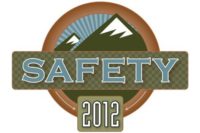How safety pros consume information in 2023
A look at what different generations value when it comes to knowledge

Credit: Getty Images
ISHN’s recent survey of safety managers and others involved in safety decision-making reveals mixed attitudes when it comes to preferred means of collecting safety and health-related information. The “consume information” in the headline refers only to how safety pros gather their information. It does not involve tech products such as eLearning, artificial intelligence, virtual reality, connected worker communications, data analytics, software to manage environmental health and safety management systems or for reporting incidents.
Keep in mind the average age of respondents is in their early to mid-40s. Some safety pros are Baby Boomers (born between 1946 and 1964); the majority fall into the Generation X demographic (1965 – 1980]; Generation Y or Millennials (1981 and 1996} and Generation Z (1995 – 2012).
Some Baby Boomers are staying on the job past retirement age. They are competitive and driven, prefer working in the office to remote work, and they have had to adapt to the tech age. When the internet took off in 1995 Boomers were well into adulthood. Unlike following generations, they were not born into technology.
Gen Xers value leadership roles and education, they want to keep learning. This could be a reason why leadership is such a popular topic in safety circles, and why continuing education and certifications are popular.
One characteristic of Millennials or Gen Y workers fits perfectly with the mindset of safety pros: They are motivated by meaningful work.
Millennials prefer work that uses their creativity, leverages their talent, and makes an impact on others. A small business survey of employees asked the employees what they consider to be the most important factors when considering a job after the pandemic. Doing work they are passionate about is a top factor {39 percent} when considering job opportunities in the future.
Making an impact on others… motivated by meaningful work… doing work they are passionate about… Safety is surely meaningful work that has a major impact on others, and many pros have a passion for their work, going beyond the call of duty.
The mixed attitudes of professionals come into play when you compare digital age pros’ information sources with the sources preferred by older workers.
Safety pros attending five or more events per year clearly prefer virtual attendance to being there live. Only respondents who attend one event each year prefer live over digital.
Media consumption is where a degree of digital disinterest comes in. 34% of respondents never listen to a safety-related podcast, for example. 29% listen less than once a month to a podcast. Only 7% listen to podcasts a couple of times each week. Time and content could be issues here, maybe even important than age. Many overloaded pros don’t have time to listen to podcasts, and the content is unlike consumer podcasts that are often entertaining, humorous, feature celebrities, and play off current events news and sports.
Social media doesn’t get a lot of support. 28% never use social media. 27% dip into social media less than once a month. 7% use social media daily. Time and content again could be factors here. During the workday professionals don’t have the time to check into LinkedIn, YouTube, Facebook and other platforms popular with consumers, many of whom are slaves to social media. And social media was not built for technical expertise and the type of work-related information pros are looking for.
Apps for mobile devices have never been used by 19% of respondents. 33% say they use an app less than once a month. Only 3% use apps every day. While there is an avalanche of apps, far fewer apply to safety and health. The OSHA-NIOSH Heat Tool app is available in English and Spanish. There is also an OSHA Safety Regulations Guide app; the NIOSH Lifting Equation app; chemical hazards pocket guide app; a ladder app; the American Red Cross First Aid app; the NIOSH Sound Level Meter app; Safety Compass (interactive hazard mapping) and WorkPose (ergonomics) to name some specific safety and health apps.
These apps may be under-utilized for lack of visibility among professionals. Apps as a rule are not advertised and many will go unnoticed.
Most pros use videos a couple of times per month (23%), once a month (27%) or less than once per month (18%). Heavy usage is rare: 6% watch videos several times each week, and 6% watch videos daily. There is a possible correlation here with safety training. Many training programs are held about once a month in many workplaces.
Almost all pros will search manufacturers’ websites for equipment and services. A scant 2% never visit manufacturers' websites. The same holds true for trade magazine websites, with only 3% never having visited one.
Coming on strong are eNewsletters. Almost 38% of pros read eNewsletters on a weekly basis, and many didn’t exist 5-7 years ago. The venerable print newsletter is still read weekly by 41% of respondents.
Digital editions of eMagazines are read several times a month by 30% of professionals. Print magazines are read a couple times a month by 21% of respondents. But print magazines are still relied on more for making safety-related purchases (45%) than eMags (24%).
As younger, tech-savvy generations take hold of more safety and health positions (Gen X , Gen Y and Gen Z), it’s inevitable information consumption will increase for all digital products. The question is how long will it take for this paradigm shift to occur.
Looking for a reprint of this article?
From high-res PDFs to custom plaques, order your copy today!







